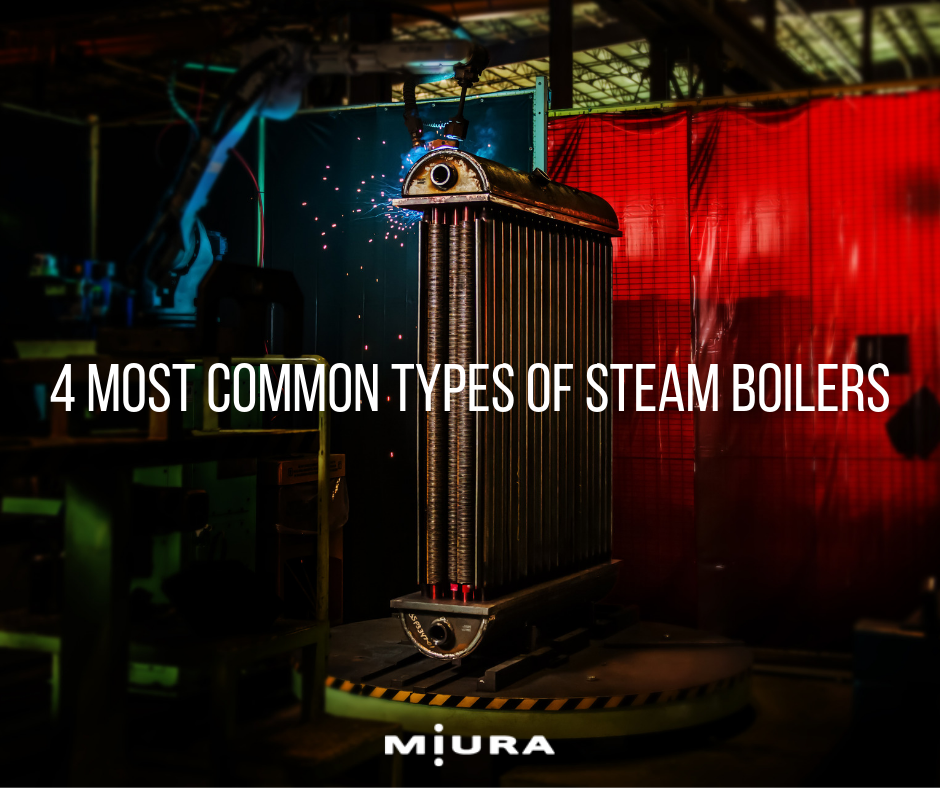4 Most Common Types Of Steam Boilers
 The first thing you should know about steam boilers is that no two boilers are created equal. From the outside, it may seem like all boilers are more or less the same. However, there are several different types of boilers with different qualities, different designs, and different purposes. Before you can have an idea of which boiler is right for your facility, you should become acquainted with the more common types of steam boilers.
The first thing you should know about steam boilers is that no two boilers are created equal. From the outside, it may seem like all boilers are more or less the same. However, there are several different types of boilers with different qualities, different designs, and different purposes. Before you can have an idea of which boiler is right for your facility, you should become acquainted with the more common types of steam boilers.
Water Tube Boilers
Water tube boilers are becoming increasingly popular as they are probably the most versatile type of boiler. In this type of boiler, water is inside a series of tubes that connect the lower mud drum at the bottom of the boiler to the steam drum at the top of the boiler. When the boiler is running, combustion gases flow around the tubes, heating up the water inside and producing steam.This type of boiler is best utilized when facilities need large amounts of steam are required, usually tens of thousands of pounds per steam every hour. Water tube boilers can be especially useful because they’re able to produce steam quickly, as there is little delay between turning the boiler on and producing steam. They also have a lower water content than some other types of boilers, which helps make them inherently safer and allows them to respond quickly to changing steam demand.
Biomass fired reciprocating grate steam boiler
Fire Tube Boilers
Fire tube boilers have been around for a long time because of their ability to meet steam needs when the demand is large and constant. These pressure vessels are filled with water while the gas used to heat the water is kept inside a series of tubes. The key to a fire tube boiler is having the boiler, burner, and control scheme all working in conjunction with one another to produce the steam and pump it where it needs to go. They are common for any steam or hot water application that requires between 15 and 2,200 horsepower.Electric Boilers
Compared to both water tube and fire tube boilers, electric boilers are much smaller and quieter. The biggest difference between electric and other boilers is that they have no exhaust stack and they don’t use fuel. This makes them easier to operate than both water tube and fire tube boilers. Also, since no fuel is being used, there are no emissions of NOx or other types of greenhouse gases. This makes electric boilers vital for areas that have tight emission restrictions for those types of substances. The catch is that they are only worthwhile when the cost of electricity is reasonable; otherwise, they can be expensive to operate and some of the convenience they provide may not be worthwhile.Condensing Boilers
Condensing boilers can be the most efficient type of boiler, as they condense water vapor into exhaust gases to produce steam. These boilers will recover part of the latent heat from evaporation that usually has no purpose and is otherwise wasted by other types of boilers. As long as the temperature of the return water is less than 110 degrees, it’ll be useful for a condensing boiler. The cooler the return water, the more efficient the condensing boiler will be, sometimes reaching up to 98% efficiency, which is significantly higher than both water tube and fire tube boilers. What Type is Best? Ultimately, determining how much steam you need will be your best indicator for choosing what type of boiler is best. For any type of large-scale operation that requires thousands of pounds per steam every hour, a water tube boiler will usually be the best choice. The ability of water tube boilers to meet high steam demands and quickly adjust to changing needs is something that no other type of boiler can match.-
Electric Steam Boiler Manufacturers: Efficient Industrial SolutionsNewsAug.15,2025
-
Leading Electric Steam Boiler Manufacturers for IndustryNewsAug.14,2025
-
Buy Waste Heat Boilers: Custom, Efficient & Affordable SolutionsNewsAug.13,2025
-
Electric Steam Boiler Manufacturers | Industrial Power & EfficiencyNewsAug.12,2025
-
Electric Steam Boiler Manufacturers: Efficient & Reliable SolutionsNewsAug.11,2025
-
China Steam Boiler Price: Efficient Industrial Systems & BurnersNewsAug.10,2025


